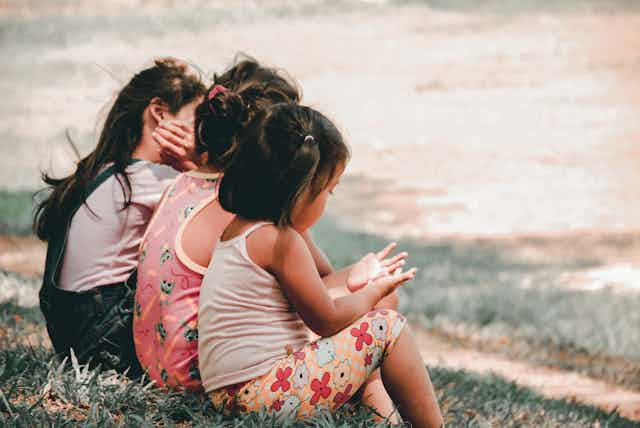The pandemic means many children will have spent the best part of a year interacting much less than normal with teachers, friends and family. One of the big questions is how this will have changed the way they have learned to speak. Have lockdown and other COVID-19 measures affected how children acquire the speech and language skills so vital to their academic and social development? And if children’s speech has been held back, what can parents do about it?
A recent survey of schools and parents, conducted by the Education Endowment Foundation, has found that children who started school in autumn 2020 needed more support than in previous years.
The findings suggest that the greatest area of concern was communication and language development, in which 96% (55 out of 57) of schools said they were either “very concerned” or “quite concerned”. Close behind were personal, social and emotional development (91%) and literacy (89%), skills which are heavily reliant on the development of strong speech, language and communication abilities.
Impact of lockdowns
Parents have done an amazing job through the pandemic to keep their children safe and healthy. Having few activities available to them and restrictions on seeing extended family has been a challenge for many.
But this has reduced children’s exposure to new vocabulary – to words we might use when we visit the farm, say, or go to see grandma. This is important as we know that vocabulary levels at age two predict children’s performance at school entry, which itself is predictive of later outcomes.

Impact of mask wearing
Widespread mask wearing during the pandemic has also made us realise how much we rely on lipreading. Not being able to see lips move during speech, combined with the dampening effect that wearing a mask has on the sound produced, has made it difficult for us to understand what other people are saying. This is particularly a problem for the many children who experience glue ear, which can lead to temporary hearing loss, in early and middle childhood.
In school and pre-school, children may struggle to differentiate between similar sounds, such as “p” and “t”, when their teacher is wearing a mask. That can impact on a child’s speech development or their phonological awareness, which is the ability to break down words into speech sounds to assist with early reading and spelling acquisition.
Masks also obscure facial expression, which contributes to how we understand the meaning behind the words we hear. When this is taken away, not only is the potential for misunderstanding (and mislearning) increased but there can also be an impact on children’s development of social and emotional skills.

Access to therapy
While lockdown has affected opportunities to promote speech and language development for all children, those who were already most at risk are likely to have been disproportionately affected. Many of these will be children who require speech and language therapy.
A report by the Royal College of Speech and Language Therapists found that 62% of children who needed speech and language therapy (from a survey of over 400 parents) received none during the first lockdown. Where possible, services were provided remotely. However, the same survey found that 19% of children did not like having speech and language therapy on video, while 12% could not cooperate with it.
Children born with cleft palate are one of several groups at high risk of problems with speech development. To investigate the impact of the first lockdown, researchers at the University of Bristol asked parents of children affected by this condition about how effective remote speech and language therapy provision had been.
Of 212 responses, 26% reported it was very effective while the remainder said it was somewhat effective (67%) or not at all effective (8%). Some parents reported that they felt the video appointments were “better than nothing”.
What can be done to help?
There are several key things that parents can do to support their child in learning to speak. From day one, talk to your baby about whatever they show an interest in. Use simple sentences and make your voice sound interesting by using lots of intonation and facial expression. Babies and toddlers like and need lots of repetition so if your child is looking at a bus then say lots about the bus, describing what it looks like, talking about how it moves and saying the word “bus” over and over again.
The same principles apply as children get older. Talk to them about the things which interest them. Respond to what your child says and does, so that they start to link words and sentences with meaning. Now that restrictions are easing, look for opportunities to develop your child’s vocabulary by visiting places such as libraries, city farms, parks and gardens and meeting up with friends and family.
For more ideas and support, organisations such as I CAN, the children’s communication charity, of which I am a trustee), have developed resources for parents to help pre-schoolers and primary-aged children with their speaking and listening. The Talking Point website is another source of information for both parents and professionals who may be worried about a child’s speech and language development.
Most children will respond quickly. But for those who continue to struggle, talking to a health visitor or teacher and a speech and language therapist will help determine whether more support is needed.


